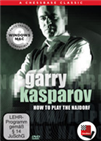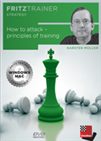The spirit of chivalry
For it is in giving that we receive
Saint Francis of Assisi
Right from the times of Greco until the current day, the idea of sacrifices in chess has appealed to amateurs and professionals alike. Masters of yesteryear valued the spirit of chivalry very highly, and would even stake their quest for victory in order to create artistic beauty. Perhaps, things have changed a little bit nowadays with the advent of better defence aided with the advent of powerful chess engines refuting (in theory) daring and beautiful attacks through cold-blooded defence — though, I have to admit, who knows how Alpha Zero has changed even the perception of the engines!
Nevertheless, I know that all of the players aspire to create a lasting masterpiece over the board. If sacrifices appeal to the artistic side of a chess player, what can be a better way than to sacrifice the most powerful of all pieces, the queen?
While observing the games from the 2019 Asian Continental Championship in China, the following position from the first board duel between two talented youngsters caught my eye.
 Between 2004 and 2007 the 13th World Champion Garry Kasparov recorded a large 3-volume Najdorf video course. ChessBase is publishing this great classic in a complete edition in the current ChessBase Media format. Look forward to this classic of chess!
Between 2004 and 2007 the 13th World Champion Garry Kasparov recorded a large 3-volume Najdorf video course. ChessBase is publishing this great classic in a complete edition in the current ChessBase Media format. Look forward to this classic of chess!This is the position after White’s 9th move in the game between Alireza Firouzja (then representing Iran) and Karthikeyan Murali (India). Here, after 21 minutes of thought, former Karthikeyan came up with 9...Qxc3!!.
From the time spent, I infer that it was purely an improvisation over the board than a result of detailed home preparation — which makes it even more impressive! The sacrifice is a purely positional one, and there are no forced lines leading to clear assessments in the near vicinity.
I do not (or even want to!) know whether the sacrifice is objectively the best continuation and so on. But it is clear that, in a practical game, your opponent is in for a big shock when you sacrifice your queen for two minor pieces this early in the game. There can also be thoughts such as, “I need to refute this impudent sacrifice”, which can be counterproductive to a calm thought process.
So, all in all, a brilliant psychological master stroke, but things do not end there! Thinking purely in chess terms, I like the fact that Black gets two minor pieces and a pawn for the sacrificed queen, besides wrecking White’s pawn structure a little bit. He also gains good control of the dark squares. But all said and done, a queen is still a queen, and it still requires great guts and imagination to sacrifice it!
Here is the position after two more moves.
Note the position of the pawn on h3, which weakens the g3-square and also indirectly weakens the f4-square. If the pawn were on h2, White could have retained a good chance of control of the central dark squares with an eventual g2-g3 and f3-f4. But black obviously was attentive to this little detail!
Moving on, we come to the position after Black’s 16...Bf4
Clearly things have become a whole lot brighter from Black’s perspective. He is completely dominating the central and kingside dark squares, thanks to the absence of White’s minor pieces which could have controlled them. White’s king is rather shaky in trying to find a permanent shelter, while White’s pawns — especially the backward doubled pawns on the semi open c-file — are inviting targets for Black’s pieces.
Black has no targets/weaknesses to offer White’s major pieces. Black’s piece coordination is nothing short of remarkable!
Let us move in to the position after move 27 by Black.
Each one of Black’s pieces is a symbol of efficiency. With 27...f5 Black brings in the dormant rook from f8 into the game and crashes through White’s defences. I will conclude this game with two more diagrams.
This position after Black’s 32nd move is reminiscent of endgames from a Sicilian Dragon, where Black mops up all White’s pawns despite being an exchange down.
The final position after move 53...Kf3, whereupon White resigned, is a picture of pure domination! Given below is the full game with my comments.
While looking at the above game, the famous confrontation between Boris Spassky and David Bronstein from the 1956 Amsterdam Candidates obviously came to my mind. I will share some interesting moments from the classic game.
Bronstein played 9...Nxg3 here, inviting 10.Qf2, to which he had prepared the response...
10...Nxf1, sacrificing his queen for two minor pieces and a couple of pawns, just like it happened in the Firouzja v. Karthikeyan game.
Moving forward, we reach the position after White’s 13.b3. Here, according to Bronstein, it was possible to play the active 13...Na3!? with a later ...Nb4 in mind. Instead, he chose to play 13...Nb6 and the game went on.
The next interesting moment comes after White’s 20.exf5.
Once again, according to Bronstein, he had a fine move in 20...Ne7! wherein he would keep the initiative, which would at least be good for a draw.
A sample variation which captivated me was — though it is by no means forced — 21.fxg6 Nf5 22. gxh7+ Kh8 23. Qe1 Nd3 24. Qd2 Nh4+ 25.Kg3 Rg8+! leading to mate.
Instead, Bronstein chose to play 20...Bf5, which led to the sly response 21.Ra4! from Spassky, which as Bronstein admits, he had evidently overlooked.
The game was a big slugfest after that, but Spassky nursed home his material advantage in exemplary fashion. You can check the full game with Bronstein’s comments from his book Sorcerer’s Apprentice, co-authored with Tom Furstenberg, in the replayable board below.
This is a position from a blitz game between Vladimir Kramnik and Garry Kasparov from 1994. As you might have already guessed, Black chose 12...Nfxe4!, sacrificing the queen for two minor pieces and a pawn. Despite it being a blitz game, it illustrates the point well and is quite similar in spirit to the other two games examined here.
Find the continuation and the game in full in the board viewer below.
 Most players prefer to attack rather than defend. But what is the correct way to do it? GM Dr Karsten Müller has compiled many rules and motifs to guide you, along with sharpening your intuition for the exceptions.
Most players prefer to attack rather than defend. But what is the correct way to do it? GM Dr Karsten Müller has compiled many rules and motifs to guide you, along with sharpening your intuition for the exceptions.My observations from these three games are as follows:
- The side sacrificing the queen maintains a very clean pawn structure.
- The minor pieces coordinate well with the pawns as well as with the remaining major pieces on the board.
- This also means that there are no targets for the opponent’s queen, and instead there are usually targets for the side that has sacrificed his queen
- The queen, though a very good attacking piece, is a poor defensive piece. This is even more pronounced when dealing with pieces of lesser value (especially the minor pieces).
To conclude, I would like to congratulate Karthi for taking such a pretty decision and etching his name in history along with the other giants!
I also feel that I have barely scratched the surface of a fascinating topic — namely positional queen sacrifices. Interested readers can turn their attention towards Rudolf Spielmann’s The Art of Sacrifice in Chess and Mihai Suba’s Positional Chess Sacrifices.
Links























